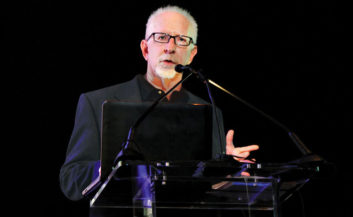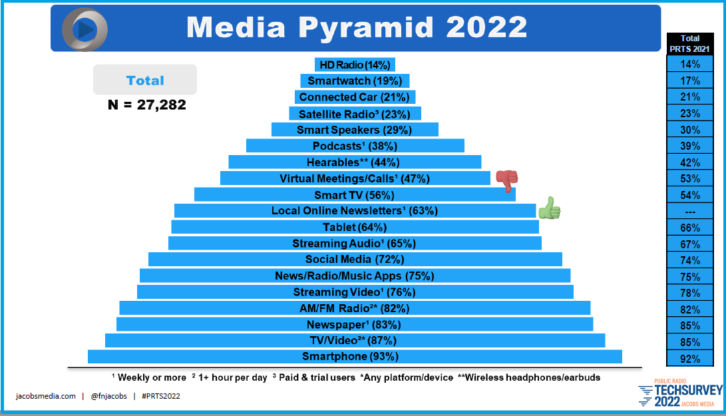
Public radio’s “vital signs” are flat and its momentum is down.
That’s the conclusion of researcher Fred Jacobs. He is in New Orleans presenting his company’s study, “The State of Public Radio in Post-Pandemic America,” to the Public Radio Content Conference.
Jacobs used the term “constagflation” to describe the state of public radio in the United States.
He said nearly a fifth of public radio fans don’t listen to the radio for one hour a day.
Also, while three out of four have a “regular radio” at home, this is a new low point. Meanwhile only about half of millennials have a radio at home.
Further, public radio’s “recommendation” scores continue to sag.
He noted that, like public radio listeners in general, the survey’s respondents continue to age, now averaging 64.3 years old, and only 9% of the respondents were under 44.
[“Fred and Paul Jacobs to Receive NAB National Radio Award”]
There are positive findings.
Public radio’s core values such as trustworthiness and objectivity are “alive and well.”
Digital listening to public stations is at least steady.
Alternative news sources including daily podcasts and newsletters “look promising” for the sector.
The COVID recovery is accelerating, though in-car listening is still off from pre-pandemic levels.
Meanwhile, ownership of smart speakers has plateaued. Jacobs said radio streaming is the top reason respondents use smart speakers, and he calls this a “huge opportunity for public radio.”
Podcasting, Jacobs found, “continues to be a mixed bag,” because it is growing but eating into radio listening. Podcast commercials, he added, may be losing some of their impact.
Jacobs said Bluetooth has surpassed FM radio as the feature most often mentioned as very important among new car buyers in the survey (read more on that); but broadcast radio continues its in -car audio dominance as far as % of time spent in the car.
One of the trademarks of Jacobs’ TechSurvey reports is a pyramid showing the percentage of respondents who use various technologies and media, from video and newspapers to connected cars and smart watches. The pyramid for public radio’s core users is stable, shown below. Smartphones are the most mentioned, HD Radio was the least among the options shown.
The annual TechSurvey asks core users of public radio about their media preferences. It is done via the web and incorporates opinions of about 27,200 consumers, found mostly via the databases of 69 U.S. public radio stations.











